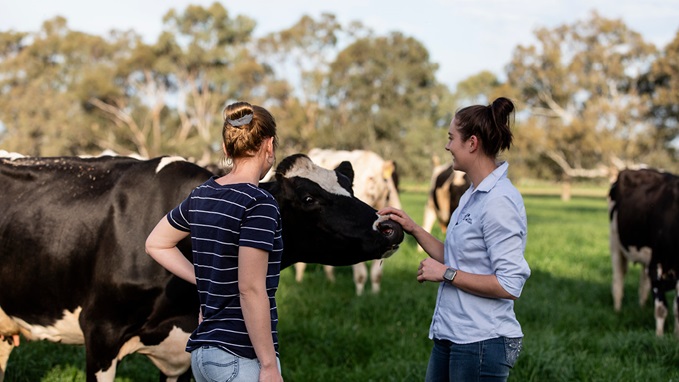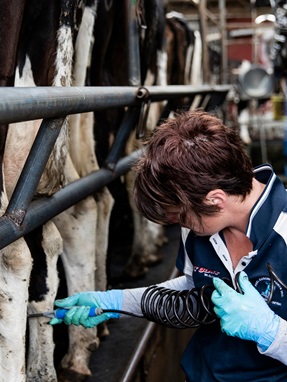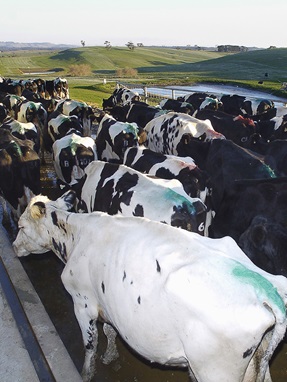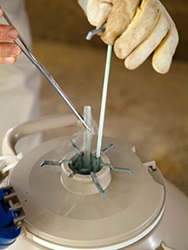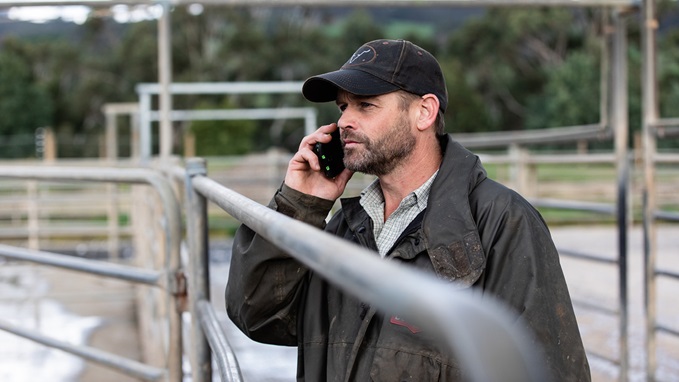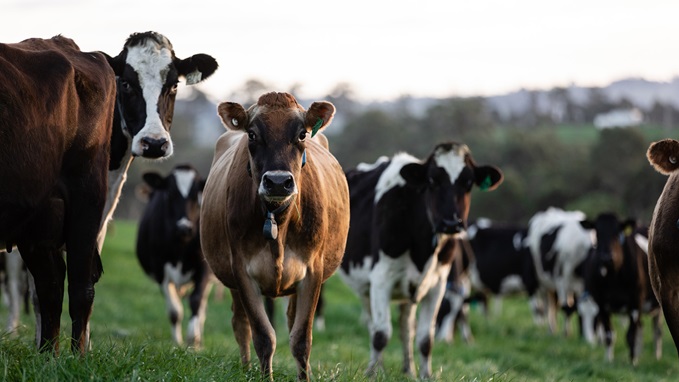
Approach to Animal Welfare
Information regarding animal health and welfare regulations and the Australian dairy industry's approach to tail docking, calving induction, euthanasia of livestock, safe stock handling and transporting cattle.
Mastitis and Milk Quality
A summary of the key programs Dairy Australia invests in to help dairy farmer…
Fertility
A summary of the benefits of having a fertile herd, the importance of record keeping and utilising a network of advisors to identify areas for improvement and links to InCalf resources.
Dairy Australia also supports investment in genetics and herd improvement through DataGene. For more information, visit the DataGene website.
DataGene
Dairy Moving Forward
Dairy Moving Forward is the dairy branch of the national primary industries RD&E framework, put in place to shape recommendations for investment in research, development and extension for Dairy Australia. There are three committees which relate to animal management and milk quality:
- Animal Husbandry, which includes animal health and welfare
- Fertility
- Mastitis and milk quality
Membership of these committees is skills based, and includes topic-specific researchers, Dairy Australia animal health and welfare experts, DairyNZ experts, RSPCA, dairy farmers, milk processors and a member of the peak body Australian Dairy Farmers.
Animal Management and Milk Quality research
Research is commissioned when a clear gap in knowledge is identified. When possible, Dairy Australia seeks to collaborate with other organisations to maximise dairy levy investment.
Animal Management and Milk Quality development
Research, both pre-existing and commissioned by Dairy Australia, is translated from scientific language and format into information which is relevant and easy to understand through development. Depending on the information gap and the improvement or efficiency being sought, Dairy Australia may seek the involvement of dairy producers to ensure it is fit for purpose. This also includes the review and redevelopment of existing extension resources to bring up to date with current scientific thinking.
Animal Management and Milk Quality extension
Dairy extension is delivered in all major dairy regions through Dairy Australia's regional teams. These extension activities and resources are outlined on the relevant pages in this section.
Calf management
Good management of calves ensures they are always well-treated. To achieve this, calves should always be:
- Fed colostrum (2–4 litres/calf) in first 24 hours of life.
- Fed daily with adequate milk or milk replacer and always have easy access to water.
- Protected from the elements and provided adequate bedding to keep clean and dry. Exposed concrete, bare earth and mud floors are not acceptable.
- Treated gently and never thrown, hit, dropped or dragged. Bobby calves must not be moved using dogs or electric prodders.
- Treated or humanely euthanised as soon as possible when sick or injured.
Care during transport and sale
Those responsible for handling and transporting bobby calves, such as farmers, calf buyers, agents, saleyards, transporters and meat processors, must follow the Australian Animal Welfare Standards for Land Transport of Livestock, which states:
- Calves are always handled with care.
- All calves transported from a farm are healthy and fit to load.
- All calves consigned to a saleyard, calf sales or to a processor must be at least five days old.
- Calves receive a liquid feed within six hours of transport with the details recorded and available for future audit.
- Adequate shelter from the weather is provided to calves prior to pick up.
- Any calves sold must be antibiotic free and not subject to any withholding period.
- Sale calves must be identified with an NLIS tag and accompanied by a vendor declaration.
Cow-calf separation
It is standard dairy industry practice to separate calves from cows within 24 hours of birth. This is done to reduce the risk of disease transmission to the calf (e.g. Johne’s Disease), to ensure adequate colostrum and feed intake, and simplify disease detection.
Aspects of cow-calf separation require further investigation and research regarding practicalities of potential approaches for farmers and their impact on animal health and welfare.
Artificial insemination
Artificial insemination (AI) practices can have a major impact on herd reproductive performance. Performance can be measured using the conception rate, estimated by dividing the number of diagnosed or identified pregnancies to artificial insemination by the number of semen straws used and multiplying by 100. AI practices should be reviewed if the conception rates are less than:
- 49 per cent in seasonal or split calving herds.
- 43 per cent in year-round herds.
- 55 per cent in well-grown heifers during the first mating period.
A low conception rate to artificial insemination generally results in lower in-calf rates. A decreased non-return rate can provide an early warning of a low conception rate to artificial insemination. If the non-return rate for a herd is less than 60 per cent or conception rate is as low as the percentages described above, further investigation is recommended.
More information
For more information on Dairy Australia's animal management and milk quality programs, please visit our Contacts Directory.
